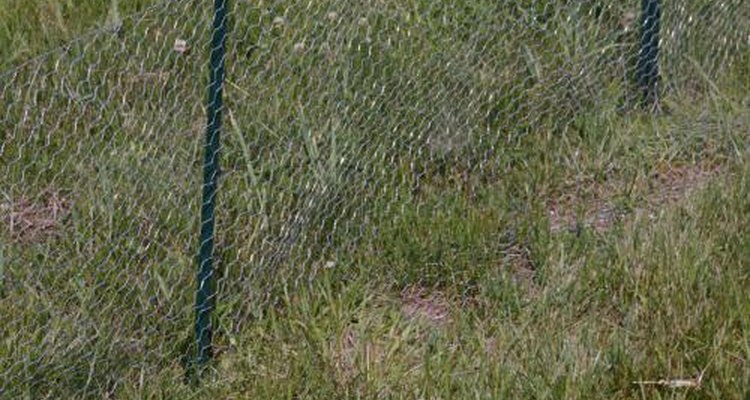
If the post is not straight, adjust it until it’s level. Hold the post upright and use a level to ensure that it’s straight. Start at one corner and insert the first t-post into the hole. It’s important to take your time with this step to ensure that your fence will be sturdy and straight. Step 3: Set the T-PostsĪfter you’ve finished digging all the post holes, it’s time to start setting the t-posts. Once you have the holes dug, you can move on to the next step of setting the t-posts in place. When digging the post holes, make sure to remove any rocks or debris that may hinder the placement of the t-posts. This will provide enough stability for the t-posts to hold the weight of the chicken wire without bending or falling over.
#Posts for chicken wire fence plus#
As a general rule of thumb, the holes should be one-third the length of the t-posts plus 6 inches. The depth of the holes is crucial and will depend on the height of your fence and the length of your t-posts. This spacing will depend on the size of your fence and the length of your t-posts. Start by digging a hole at each corner of the fence and then every 8-10 feet along the perimeter.

You can use a post hole digger or an auger to make this task easier. In this step, you will need to dig the post holes for the t-posts. A well-designed fence will not only keep your chickens safe, but it will also make your life easier when it comes to maintenance and cleaning. Take the time to carefully plan the layout of your chicken fence. This will help you visualize the final product and ensure that the fence is properly aligned. Use a string or rope to create a boundary for your fence. With your corners marked, it’s time to outline the perimeter of the fence. Sweet PDZ - Coop Refresher - Zeolite Odor Eliminator - Essential Chicken Coop Accessory This will help ensure that your fence is straight and even. Use a measuring tape to ensure that the distance between each corner is equal. Once you’ve decided on the size of your enclosure, mark the corners with stakes or flags. Remember that chickens need room to move around and forage, so don’t make the enclosure too small. Take into account the number of chickens you have, their size, and their habits when deciding on the size of your enclosure. The first step in planning your chicken fence is to determine the area you want to enclose. Before you start digging post holes or attaching chicken wire, you need to have a solid plan in place.

When it comes to building a chicken fence with t-posts, planning is crucial. Pliers or hog ring pliers Tools Required.T-posts (the number will depend on the size of your fence).


 0 kommentar(er)
0 kommentar(er)
